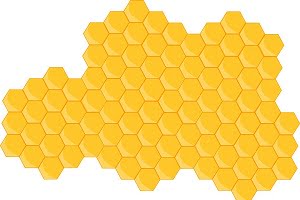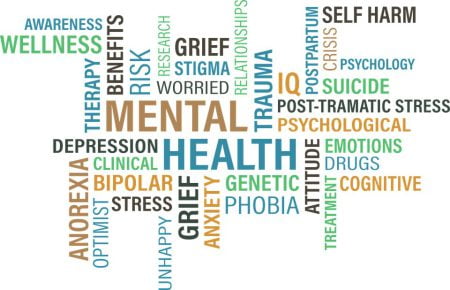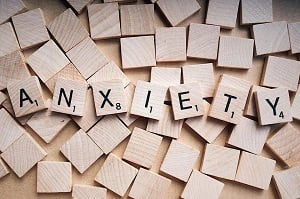Introduction
Phobia is a condition in which there is an extreme and persistent fear of an object, place, or situation. Any traumatic experience may cause phobia in children; sometimes, it is inherited from parents or can be acquired if someone discusses fear stories with children.
How Do Phobia Results in Hallucinations?
Phobia may result in anxiety, depression, and stress, which may lead to hallucinations. Hallucination is a kind of perception in which a person visualizes some things, hears voices, and feels something on the body, which is not real. In turn, hallucinations can result in some other mental disorders like schizophrenia, post-traumatic disorder, and other anxiety issues.
Does Phobia Lead to Hallucinations in Children?
Although hallucination is not a common feature of phobia, some research studies suggest that phobia may lead to hallucinations in children. Phobic hallucinations may occur in children of age-group 7-10 years. Phobic hallucinations can occur in all children, irrespective of gender. Hallucinations in children usually develop due to anxiety and fear. Anxiety is one of the common symptoms of phobia. Phobic hallucinations can affect the children’s performance at school and may also interfere with their social life. Researchers suggest the following two types of phobic hallucinations:
Visual Hallucinations
Visual hallucinations are characterized by seeing things that are not present in reality. It is a sensory condition in which a person’s brain creates some images in response to phobia. Visual hallucinations may include images of anything like people, animals, visual patterns, flashes of lights, etc. Visual hallucinations in children are mainly found if they had any traumatic experience due to phobia of any object, situation, or place.
Children experience visual hallucinations at night, and it becomes difficult for them to differentiate between reality and imagination. Children suffering from phobic visual hallucinations become psychotic and are often confused and agitated.
Visual hallucinations are not only because of phobia. Instead, there may be other reasons like an overdose of hallucination drugs (lysergic-acid diethylamide), high fever, etc. Visual hallucinations in adults may be due to various diseases like Alzheimer’s disease, Pick’s disease, and the formation of Lewy bodies.
Tactile Hallucinations
Tactile hallucinations are characterized by a feeling of touching by somebody or a crawling and tickling sensation. However, it is not real and just an imagination. For example, people suffering from tactile hallucinations often feel that insects or bugs are crawling over their bodies. Some people may also feel an air blast on their faces when the air is not blowing. This type of hallucination is called somatic hallucination.
In a study, tactile hallucination was found in a 6 years old phobic girl child. The child felt that bees are moving all around her body, like in her pants, socks, shirt, etc. She kept on looking for the bees everywhere, like under her shirt, trousers, socks, and waistband. Children suffering from tactile hallucinations often complain about their hallucinations at night. However, such children do not have any medical history.
Read About Phobias and Brain Activity
How Can You Diagnose Hallucinations in Children?
Phobic hallucinations in children can be diagnosed by knowing the symptoms. Besides, performing some tests like blood tests, computed tomography (CT) scan, and magnetic resonance imaging (MRI) of the brain may also help in the diagnosis. Sometimes a physical examination is also helpful for diagnosing phobic hallucination in children.
Treatment of Phobic Hallucinations in Children
Therapies and medications are useful in the treatment of phobic hallucinations. Some of them are:
Cognition Behavioral Therapy
It is a type of talk therapy that is used by doctors to treat hallucinations and phobia. In this therapy, the doctor will ask the child some questions like a hallucination, its cause, and symptoms. All these questions will help the doctor identify the exact origin or fear leading to hallucination. In this therapy, the doctor shows some frightening things to the child about which he/she is phobic and will encourage him to overcome the fear. All this will reduce the symptoms of phobic hallucination in the children. The doctor may also recommend some counseling sessions to check the improvement after the therapy.
Medications
Doctors usually prescribe antipsychotics drugs to children suffering from phobic hallucinations. Some of the commonly prescribed antipsychotics for phobic hallucinations in children include chlorpromazine, haloperidol, and perphenazine.
FAQs
Is it Normal for a Child to Hallucinate?
It is not a normal condition for a child to hallucinate. Hallucinations may cause some psychotic disorders like schizophrenia, anxiety disorders and some other mental issues. Hallucinations can impact a child’s performance and thinking pattern. It needs to be treated early.
Can Dehydration Cause Hallucinations?
Yes, severe dehydration can cause confusion and hallucinations. Dehydration usually occurs when your body does not have sufficient amount of water due to loss of water through urination. Dehydration causes hyponatremia (excretion of sodium and potassium ions from the body), which results in hallucinations.
Is My 2 Year Old Hallucinating?
No, 2 year old child cannot hallucinate. Children of age group between 6 to 12 years can feel hallucinations. If you find that your child is feeling something, visualizing some images or hearing some noises which are actually not present around him/her, you can conclude that your child is hallucinating.
What Are Common Hallucinations?
The common hallucinations may include:
- Visual hallucinations like watching some people or animals around that are not present actually.
- Auditory hallucinations such as sounds of windows, music and footsteps when there is nothing.
- Tactile hallucinations such feeling sensations on the body such as tingling and crawling on the skin and in the body when there is nothing on the body.






